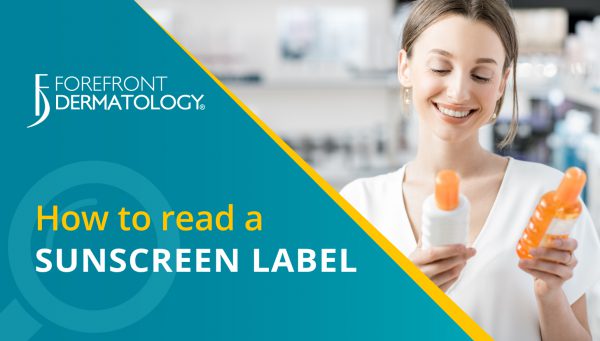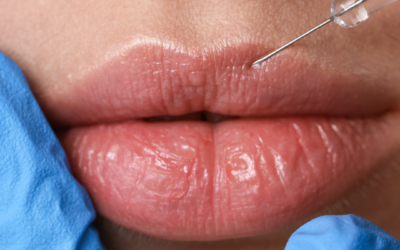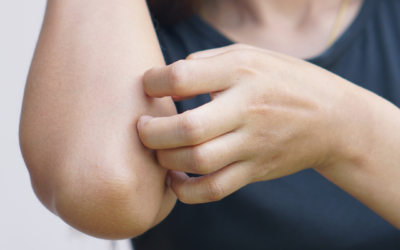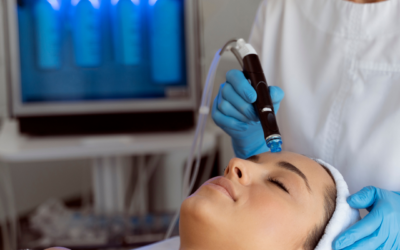
Reading a sunscreen label shouldn’t feel like you are deciphering The Da Vinci Code. We understand that people care now, more than ever before, what they are putting on their skin. Let us help you interpret everything you will read on a sunscreen label.
►Broad-Spectrum
It’s vital for the sunscreen you use to be broad-spectrum coverage because that means it provides protection against both the sun’s UVA and UVB rays. According to Dr. Andrea Garrett, board-certified dermatologist with Forefront Dermatology, “UVA rays penetrate the skin more deeply than UVB rays. They are a prominent cause of premature skin aging like wrinkles and fine lines. Whereas, UVB rays tend to damage the skin’s outermost layer and cause sunburn. Don’t be fooled though, both UVA and UVB rays cause skin cancer.”
►SPF
SPF stands for “sunburn protection factor” and is a measurement of how much UVB rays a sunscreen can filter out. The higher the SPF rating, the higher percentage of rays it protects against.
“I recommend always using at least a minimum of SPF 30 over your entire body, making sure not to skip places like your ears or even top of feet. It’s important to remember that even if you use SPF 100, you need to regularly reapply – it won’t last forever,” commented Dr. Garrett.
►Water & Sweat Resistant
Let’s break a myth right away –there is no such thing as a waterproof sunscreen. The FDA actually bans the use of the term “waterproof”. The reality is sweat and water wash sunscreen from our skin. The terms water-resistant and sweat-resistant indicate whether the sunscreen remains effective for 40 minutes or 80 minutes when you are swimming or sweating. Most labels will state the length of time on the label. Some manufacturers will label this type of sunscreen as “Sport”.
►Baby Sunscreen
For parents out there, taking care of your child’s skin is crucial. Choosing a sunscreen labeled “Baby” generally means the sunscreen contains only the active ingredients titanium dioxide and zinc oxide. These two ingredients are less likely to irritate a baby’s sensitive skin. “When it comes to children, sunscreen is not enough. Just five blistering sunburns can increase a child’s risk of developing melanoma by 80 percent. On top of sunscreen application, always remember to keep them in the shade, and dressed properly with long sleeves, wide-brimmed hat and sunglasses if they will tolerate them,” stated Dr. Garrett.
►Active Ingredients
There are two main types of active sunscreen ingredients: chemical and physical. Chemical ingredients such as avobenzone and benzophenone work by absorbing UV and reducing its penetration into the skin, whereas physical ingredients such as titanium dioxide and zinc oxide stay on top of the skin and deflect UV rays. Many sunscreens available today combine chemical and physical ingredients.
Get Checked.
Regardless of whether you have noticed an odd or changing mole, a yearly skin examination is always recommended as a preventative measure to skin cancer. The skin health experts at Forefront Dermatology are ready to see you for a simple, 10 minute skin cancer screening. To find the Forefront dermatologist nearest you, visit the locations page today.





